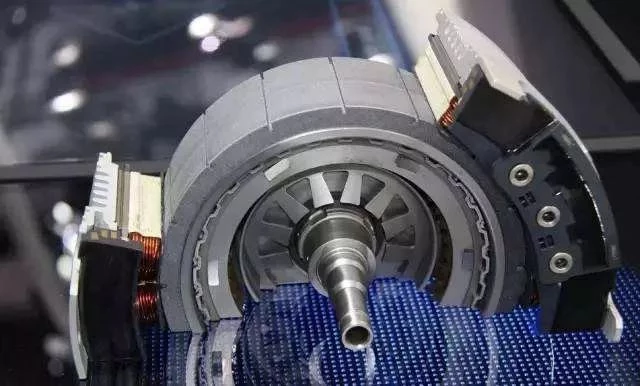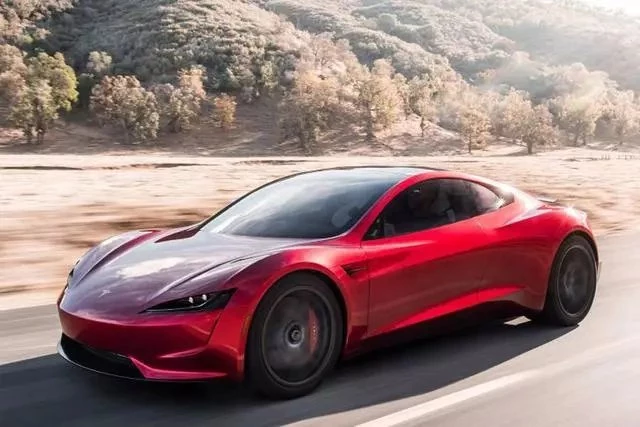Home>Blog >Ac asynchronous motors
Home>Blog >Ac asynchronous motors
WILL AC ASYNCHRONOUS MOTORS BE REPLACED BY PERMANENT MAGNET SYNCHRONOUS MOTORS IN EV?

Permanent magnet synchronous motor
Different types of electric motors were introduced earlier. Compares to asynchronous ac motor, PMSM (permanent magnet synchronous motors has advantages as below:
High Efficiency
- The magnetic field of the permanent magnet synchronous motor is generated by permanent magnets, the excitation loss caused by the magnetic field generated is avoided.
- The external characteristic efficiency curve of the permanent magnet synchronous motor has a higher efficiency value at light load. Compared with the asynchronous motor, this is the biggest advantage of the permanent magnet synchronous motor in terms of energy saving.
- Due to the high-power factor of the permanent magnet synchronous motor, its current is smaller than that of the asynchronous motor. Therefore, the stator copper loss of the motor is small and the efficiency is high.
- Transmission system is highly efficient. The parameters of the permanent magnet motor, especially the power factor, are not affected by the number of motor poles, so it is easy to design a multi-pole motor, so that the traditional load motor that needs to be driven by the gearbox can be turned into a permanent magnet synchronous motor, and a direct drive system driven by the motor The gearbox is omitted and the transmission efficiency is improved.
High Power Factor
- High power factor, low motor current, reduce copper consumption of motor stator, more energy saving
- The power factor is high, the power capacity of the motor can be reduced, and other auxiliary facilities such as switches and cables can be smaller, and the corresponding cost is lower
- The power factor of the permanent magnet synchronous motor is not affected by the number of poles of the motor. If the motor support system allows, the number of poles of the motor can be designed to be more, the corresponding motor volume is smaller, and the direct material cost of the motor is lower.
Simple and Flexible Structure
Due to parameters of the permanent magnet synchronous motor are not affected by the number of poles of the motor, it is convenient to realize the direct drive of the load by the motor, and the gearbox with high noise and high failure rate is eliminated.
The permanent magnet is in rotor in traditional permanent magnet motor, leading to a low structural strength of the rotor, and the heat generated by the permanent magnet is difficult to dissipate, which restricts the ability of the motor to output mechanical energy.
The traditional permanent magnet motor drive system has two disadvantages.
First, the speed range is narrow, which means it is difficult to ensure good performance and high efficiency at low speed and high speed.
Second, fault tolerance is poor, that is, when a fault occurs, it is difficult to maintain the motor to continue to work.

In EVs, most domestic manufacturers prefer permanent magnet synchronous motors, but most European and American companies choose AC induction motors. This is mainly due to the following reasons:
- The electric cars of European and American manufacturers were originally mainly electric sports cars, which required larger torque to achieve high acceleration. With the advancement of technology, although permanent magnet synchronous motors have appeared and are more efficient, It is obviously impossible for European and American manufacturers to abandon the mature induction motor technology and turn to the research and development of induction synchronous motors. The reason why domestic manufacturers adopt more permanent magnet synchronous motors is also related to market environment factors. The most iconic is Tesla and BMW I3.
- Leaving aside market and technical factors, the rare earth materials currently used in permanent magnet synchronous motors are relatively rare overseas. According to data, China currently has about 70% of the world’s rare earth resources, and the main raw material of permanent magnets is made of neodymium iron boron magnetic materials. The total output has reached 80% of the world's total. Under such an environment, it would not be surprising that China is dominated by permanent magnet synchronous motors.
At present, the brands that use permanent magnet synchronous motors mainly include BAIC New Energy, BYD, Geely, Chery, Weimar, etc., and there are many PMSM manufacturers, including Siemens, Bosch, Continental etc. BAIC New Energy and BYD have also developed their own permanent magnet synchronous motors.
Induction motors require more efficient and complex cooling systems than permanent magnet motors.
Although the coil structure of the motor is not like permanent magnets, it is easy to demagnetize at high temperatures, but because of the extra part of the energized coil, the rotor part of the induction motor heats up at the same speed and power output. It's also faster. The power loss of the permanent magnet rotor is about one-tenth or less of that of the induction motor coil rotor, and the power loss of the coil rotor up to ten times is mostly used for resistance heating, so the induction motor rotor needs a more efficient cooling circuit. A higher power cooling circuit means a higher cost oil and water-cooling system, which is only a disadvantage. For more efficient cooling, most of the rotor coils are cooled by direct injection of oil, and the cooling oil is often shared with other mechanical structures: such as bearings and motor gearboxes. If the motor heats up too fast, the oil will not have time to cool or the oil temperature will continue to be relatively high, which will directly affect the cooling and lubricating effect of other mechanical structures. This is the effect of motor heating on the cooling of the entire traditional system, which is a system-level problem. Therefore, the limited torque output of the induction motor due to overheating is not necessarily the occasional peak power output, but it is more dangerous when the long-term high-power output = long-term high-power heat release.
ES6 is asynchronous before permanent magnet. Permanent magnet 160kw in the front and 240kw asynchronous in the back. This asynchronous motor is not always working, it only starts to work when the computer detects that you have the will to accelerate. Therefore, the energy consumption is not particularly high. This collocation avoids the contradiction of mutual repulsion between dual permanent magnet motors and the bottom battery of the rear box, extends the cruising range, and considers high performance.
